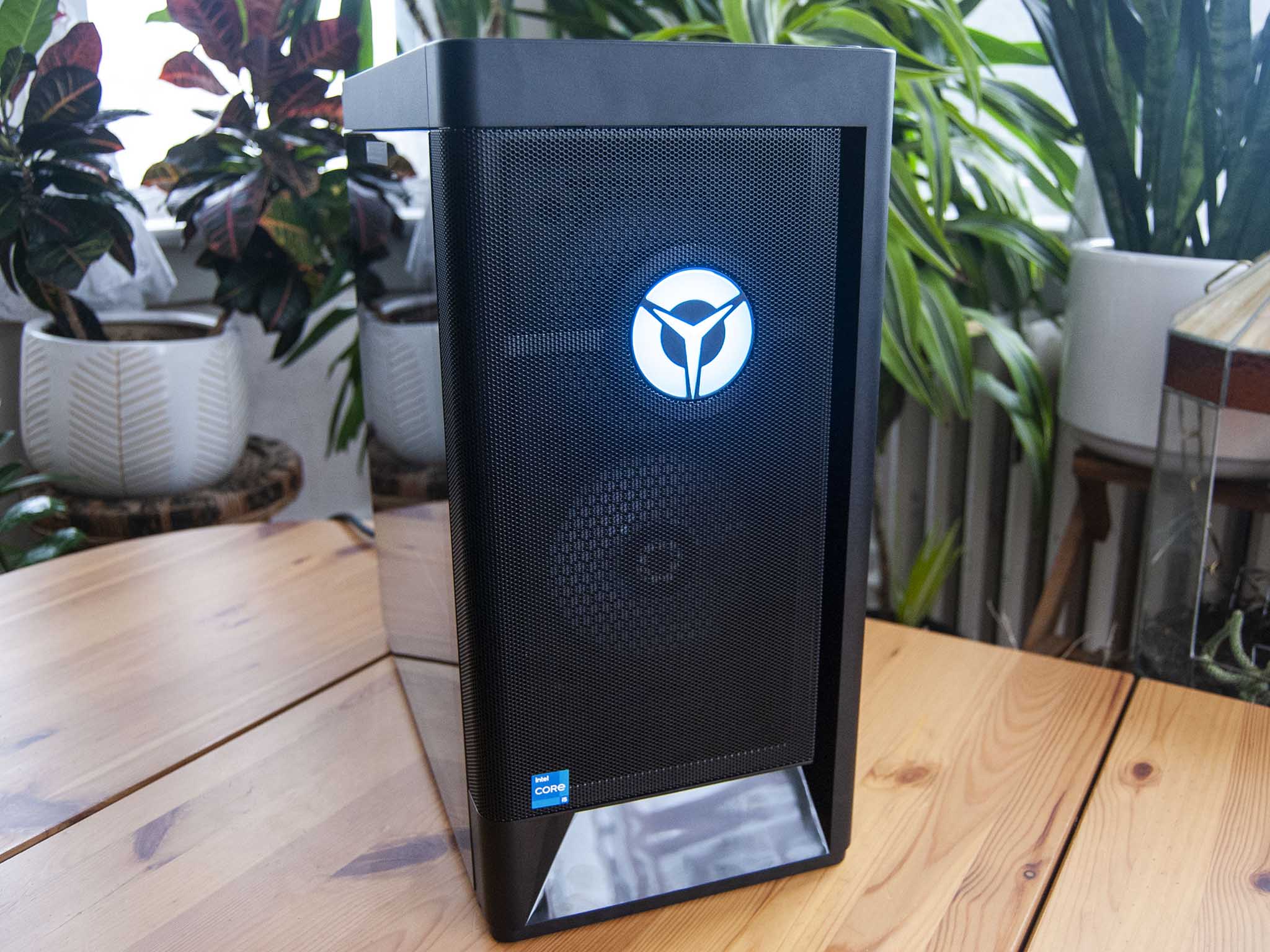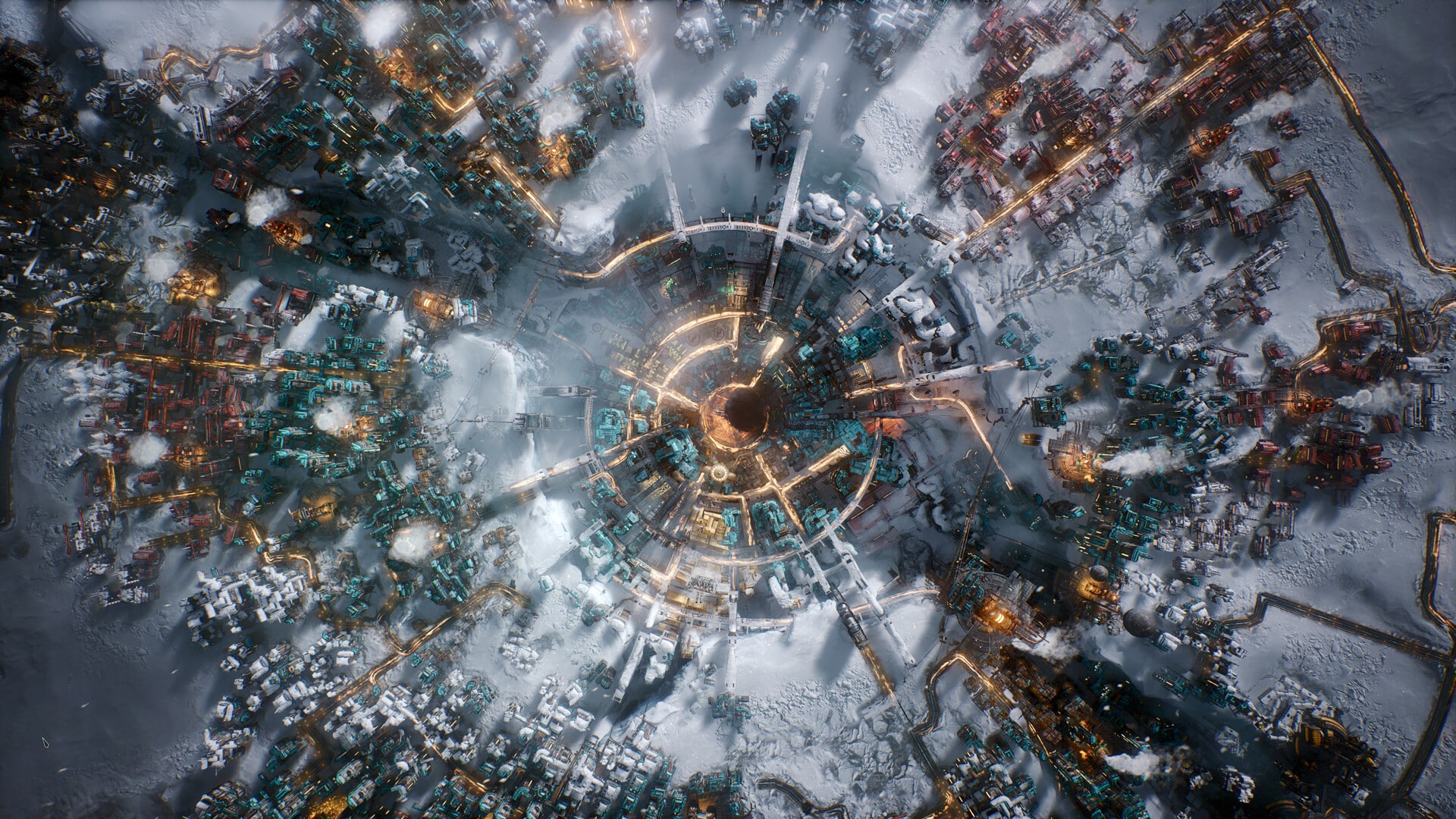It's been a rough couple of years for PC gamers, with stock shortages and rampant scalping taking a big bite out of the joy of building a PC. There's not really an end in sight to the major GPU drought, and many who never before thought about a pre-built PC are now considering it thanks to the availability of crucial hardware. Plenty of manufacturers are ready to oblige, but the pre-built market can be tough to navigate due to proprietary parts, misleading product descriptions, and shoddy craftsmanship.
Lenovo's Legion sector has been steadily improving over the years, with numerous generational updates to its gaming-focused laptop and desktop PCs. One of the best gaming laptops of the year (and one of my favorites) is the Legion 5 Pro (Gen 6), so I was excited to test out the Legion Tower 5i, also now in its sixth generation. I've been using this mid-range pre-built gaming PC for about a week to see where it excels, where it falls short, and, ultimately, whether or not it's worth your money.

Bottom line: The Legion Tower 5i (Gen 6) is a pre-built gaming PC that should suit casual gamers. It cuts a bunch of corners — namely with the motherboard, RAM, and CPU cooling — but it performs well at 1080p and runs quietly under full load. As long as you're not an enthusiast who wants something closer to a personal build, this should be considered when shopping for a mid-range pre-built PC.
For
- Runs quiet under full load
- Excellent airflow, plenty of fans
- Non-proprietary motherboard setup means easier future upgrades
- Competitive price
- Less plastic and acrylic than previous models
Against
- Limited I/O
- Single-channel RAM is underwhelming
- OEM GPU is nothing special
- System RGB lighting seems to do its own thing
- Could become a dust trap
Lenovo Legion Tower 5i: Price, availability, and specs
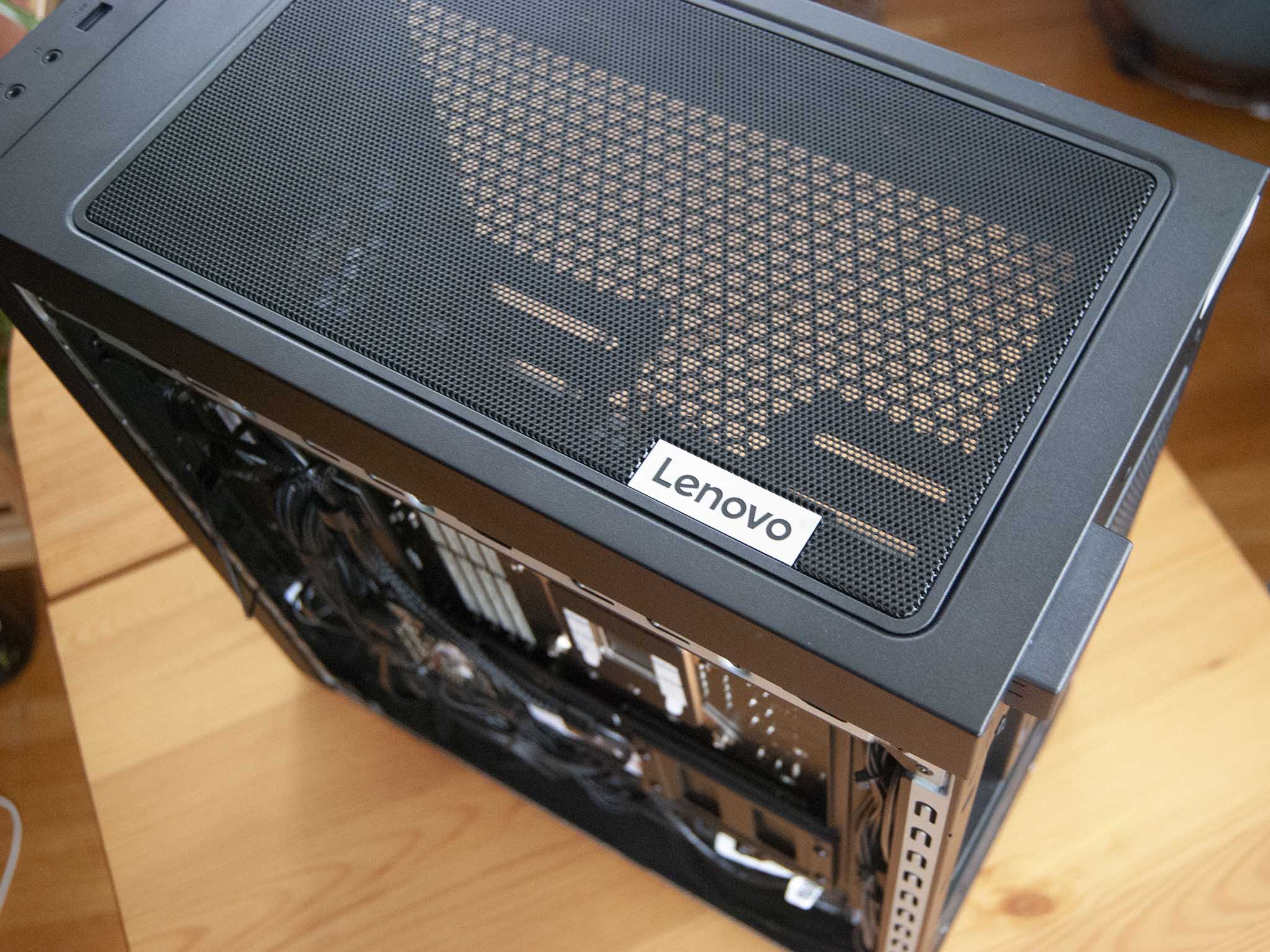
Lenovo supplied Windows Central with a review unit of the Legion Tower 5i (Gen 6). The 26L case, which was overhauled for this latest generation to offer better airflow and to take up less space, nevertheless has ample room inside for cooling solutions and performance hardware.
My review unit includes an 11th Gen Intel Core i5-11400 processor (CPU), 8GB of single-channel DDR4 RAM, a 256GB M.2 PCIe NVMe solid-state drive (SSD) coupled with a 1TB SATA 3.5-inch hard-disk drive (HDD), and an NVIDIA GTX 1660 SUPER GPU, which is one of our picks for best graphics card.
Legion stock is currently listed as "temporarily unavailable" at Lenovo's official site, at least for the Intel version. These PCs are still available at third-party retailers, though you won't get the same granular configuration options as you would at Lenovo's site. Best Buy has the same config as my review unit listed at $1,000, while at Walmart it costs $1,300.
Lenovo has the Tower 5 with AMD Ryzen 7 5700G, NVIDIA GTX 1660 SUPER GPU, 16GB of RAM, and 1TB HDD with 512GB M.2 PCIe SSD for about $1,330.
Following are the exact specs as found in my review unit.
| Category | Specs |
|---|---|
| OS | Windows 10 Home |
| Chipset | Intel B560 |
| Processor | 11th Gen IntelCore i5-114006 cores, 12 threads |
| RAM | 8GB DDR4-3200MHzSingle-channelFour slotsUp to 128GB |
| Graphics | NVIDIA GTX 1660 SUPER6GB GDDR6 VRAMDisplayPort 1.4HDMI 2.0DVI |
| Storage | 256GB M.2 PCIe 3.0 NVMe SSD1TB 7200 RPM HDDTwo M.2 SSD slotsTwo 3.5-inch HDD slots2.5-inch SSD slot |
| Ports | Rear:USB-C 3.2 (Gen 2)Two USB-A 3.2 (Gen 1)Two USB-A 2.0RJ45 EthernetThree audio outFront:Two USB-A 3.2 (Gen 1)3.5mm headphone3.5mm microphone |
| Wireless | Wi-Fi 6Bluetooth 5.1 |
| PSU | FSP 80 Plus Gold400W, 100V - 200V |
| Dimensions | 26L8.1 x 15.6 x 16.2 inches(205mm x 396mm x 411mm) |
| Weight | 30.86 pounds (14kg) |
| Color | Raven Black |
Lenovo Legion Tower 5i: Design and features
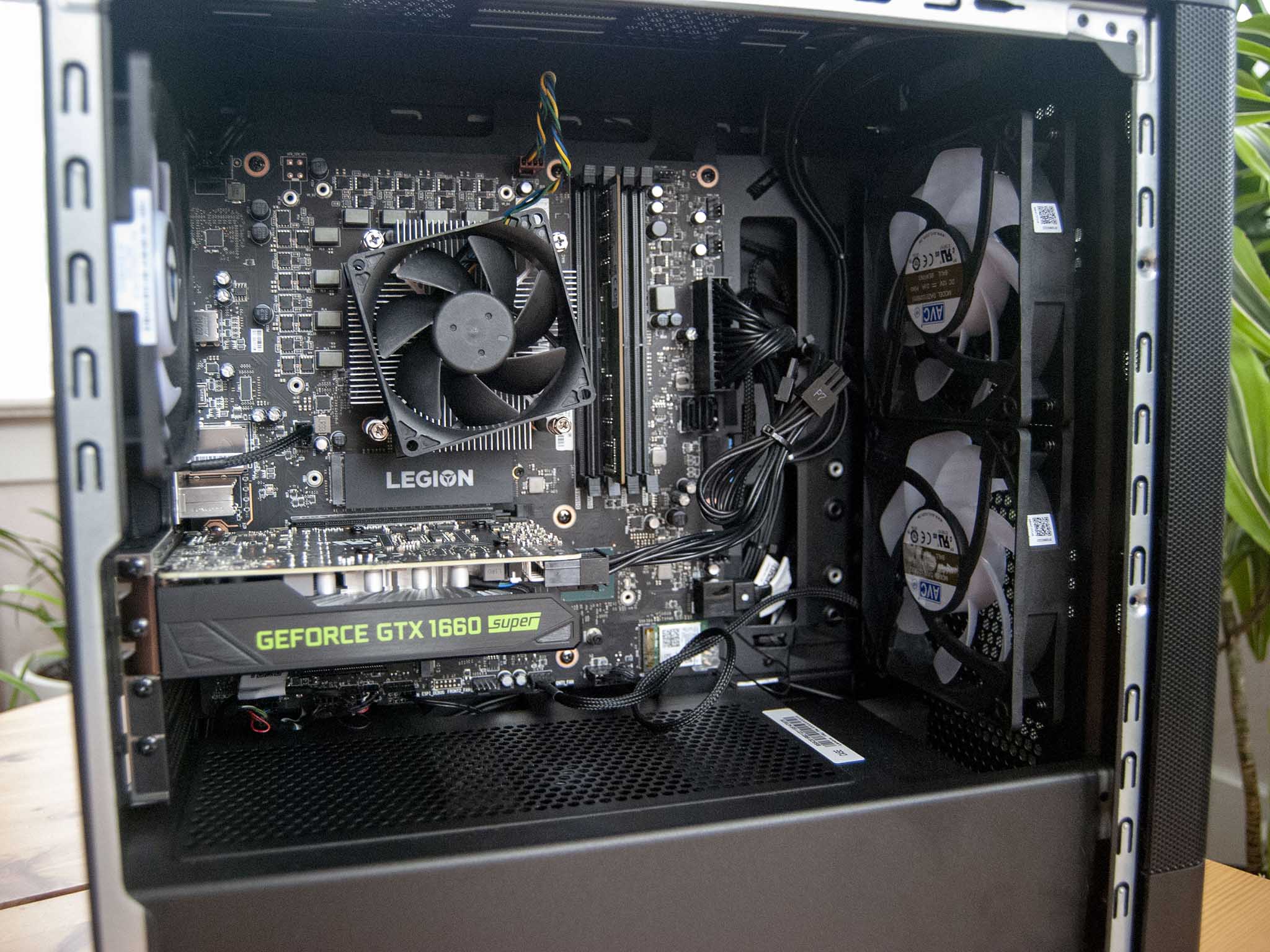
The Legion Tower 5i (Gen 6) uses a 26L case that can fit up to an mATX motherboard. The case has been trimmed down a bit from previous versions for a cleaner look, and some extra ventilation has been added. There is some plastic on the front panel, but Lenovo has gone mostly with metal for this build. The "Raven Black" powder coating seems like a quality job, and I haven't noticed any scratches or scuffs following an afternoon of disassembly.
The Legion Tower 5i's case is designed to offer excellent airflow, keeping your system cool under load.
The side panels (which have captive screws) are both easily removed to allow for internal access. You have tempered glass on one side and metal on the other side. No more acrylic for the viewing window. The top of the PC has a large cutout with mounts for fans or an AIO radiator; if you have neither installed, it acts simply as some extra ventilation.
Lenovo lists a bunch of optional cooling in some documentation, and it seems like it differs slightly depending on the performance hardware you choose. My review unit came with two 120mm ARGB fans at the front for air intake and one 120mm ARGB fan at the back for exhaust. They link up to an RGB controller mounted behind the motherboard, which has a printed diagram next to it for easier tinkering. If you swap out the CPU cooler or add extra fans, there are openings on the controller ready to plug into.
All lighting is controlled via Lenovo's Vantage app that comes pre-installed. You can choose a bunch of different presets, and there's even some ambient lighting to tinker with. Unfortunately, it seems like your lighting customization resets itself to the default configuration every time the PC is restarted.
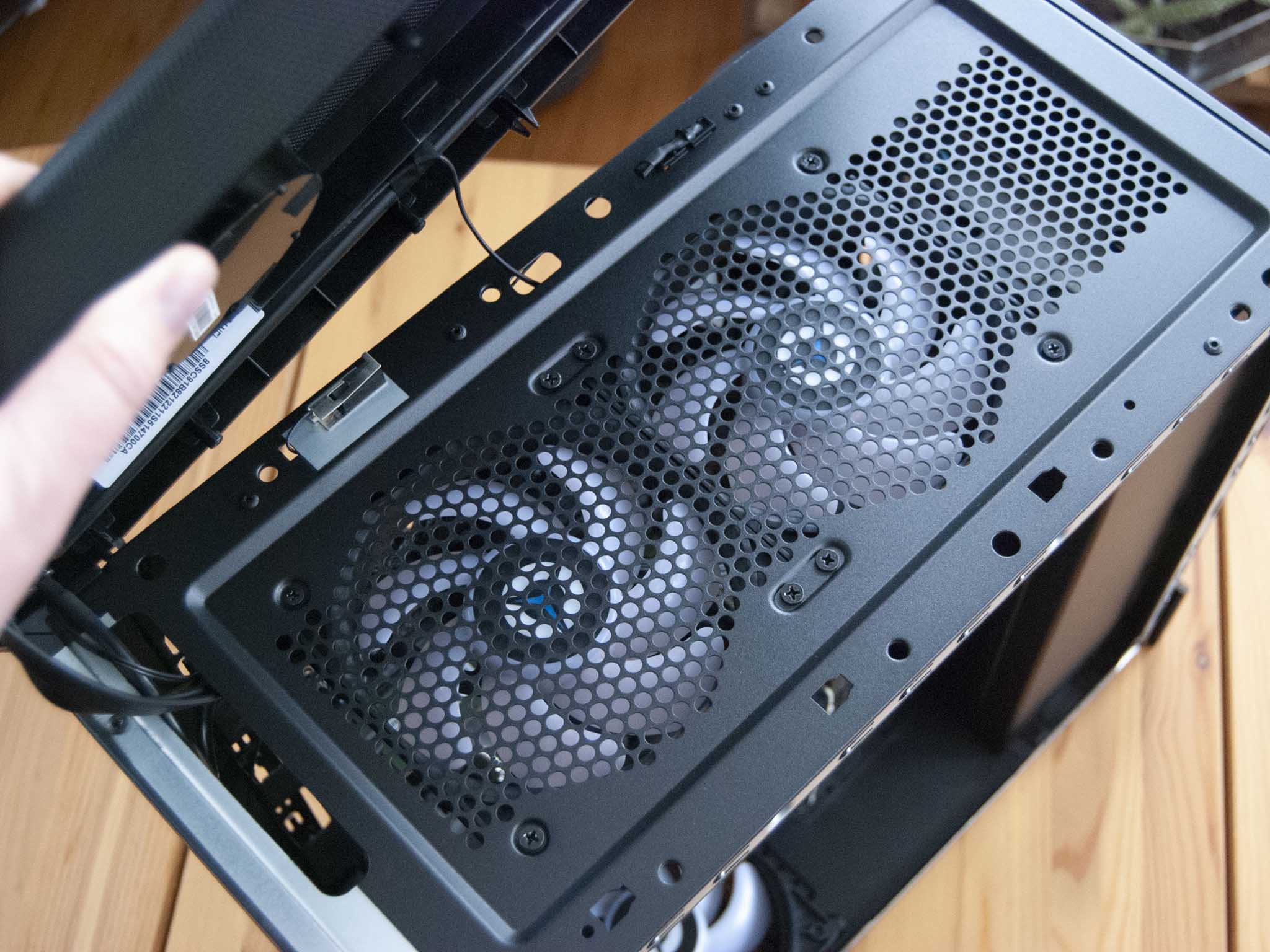
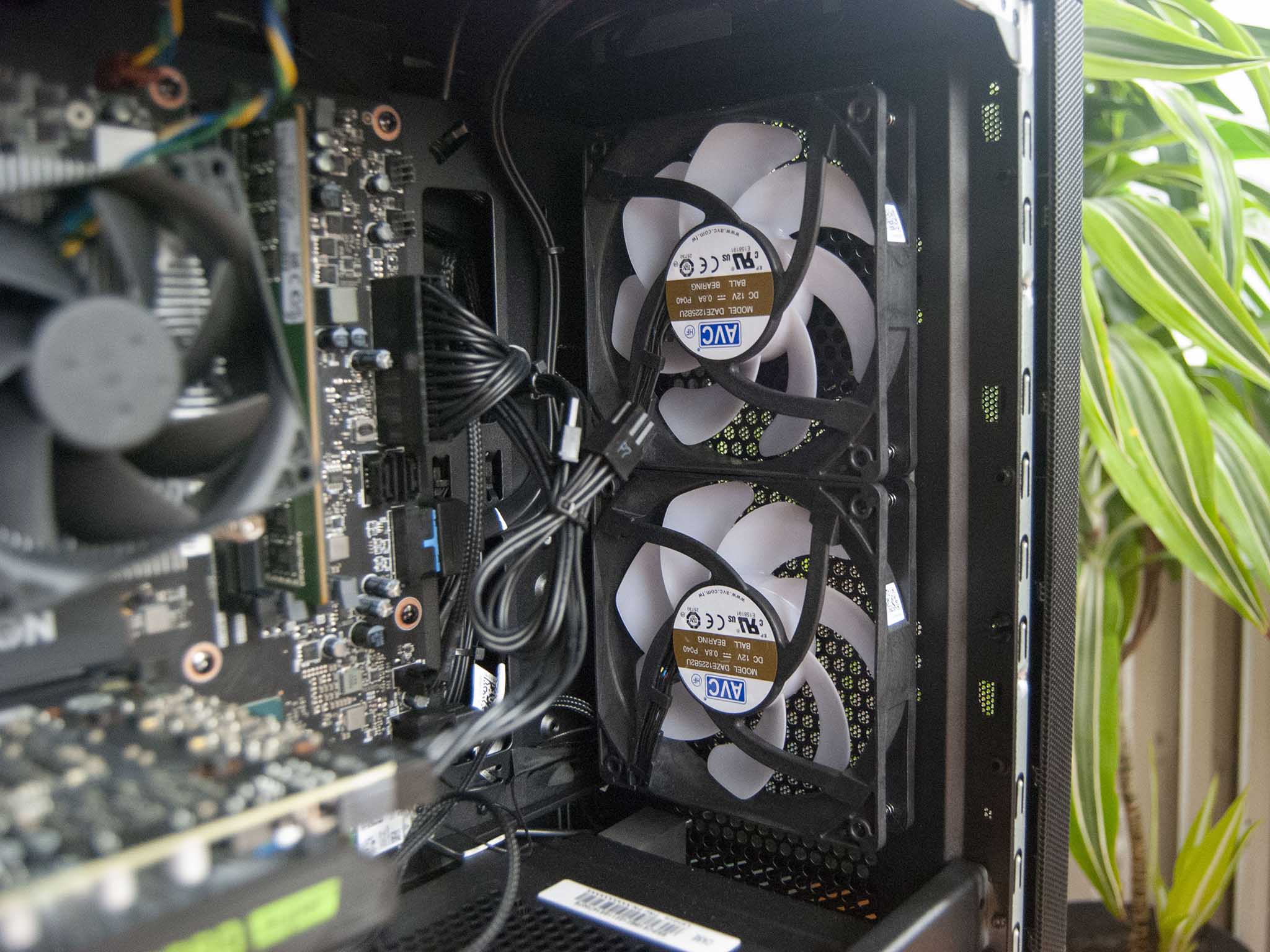
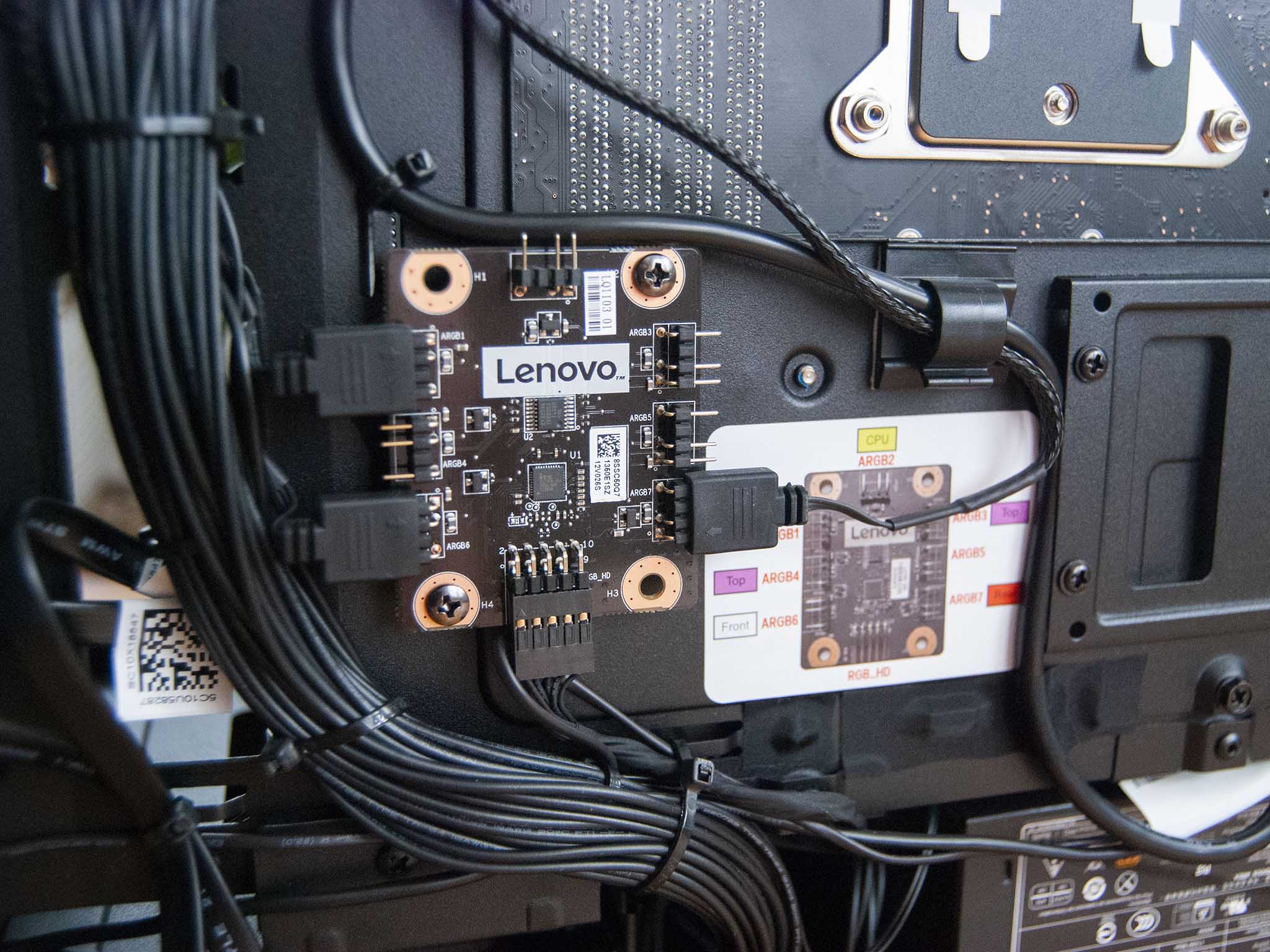
The front panel covering the fans is almost entirely open for airflow. It's grated, and there are several larger openings in a down-facing channel just below the mesh. This is a big step up in terms of keeping the PC cool under load, but the lack of a fine dust filter could have the case filling up with detritus after a few weeks. The same goes for the top vent and the bottom PSU vent. The grille looks good, but it's likely going to let in quite a bit of dust.
Ports at the front of the PC include two USB-A and two 3.5mm audio jacks for headphones and microphone. The back of the PC doesn't offer a whole lot either, with USB-C, two USB-A 3.2, two USB-A 2.0, Ethernet, and three 3.5mm audio-out hookups for 5.1 sound. Depending on the GPU your model comes with, video out ports will differ. My unit with GTX 1660 SUPER has DisplayPort, HDMI, and DVI. Altogether, port selection isn't particularly generous, but I was able to connect my main gaming accessories. There are four PCI expansion slots on the back of the PC, with two taken up by the GPU.
Motherboard, cable management, and hardware
Cable management inside the Legion Tower 5i is a bit of a mixed bag. Behind the motherboard is clean with everything traveling where it should. There's not a whole lot of room between the metal side panel, so some extra cabling is pushed to the other side where it's visible through the tempered glass. It's not as clean as I'd like, and you might want to spruce it up if you're keeping the PC on your desk to be viewed.
There's room for two 3.5-inch HDDs below the PSU shroud, with a pull-out tray that makes for easy installation. It also looks like there's a brace for a 2.5-inch SSD behind the motherboard, next to the RGB controller. And on the front side, you can fit two M.2 SSDs for faster storage. Lenovo lists PCIe 4.0 support for those who want the absolute fastest storage.
The PSU made by FSP is 80 Plus Gold with 400W of power. It's non-modular, but it's not some proprietary thing like some pre-builts use. You should be able to swap it out for something offering more power if you decide to upgrade the GPU or CPU in the future.
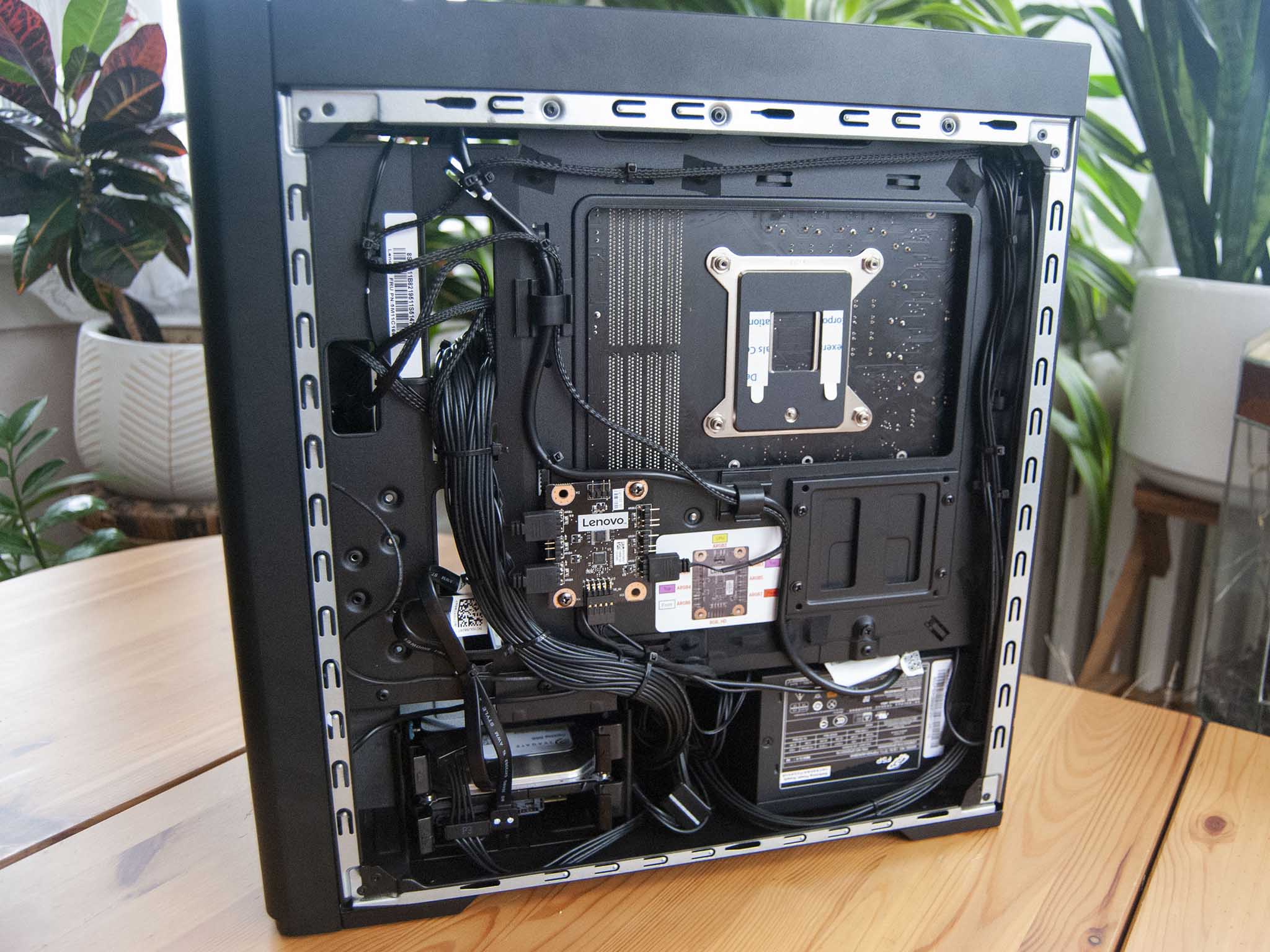
The mATX motherboard is a custom Lenovo job, but again it's not something entirely proprietary that makes it impossible to swap out. It's just an mATX board with B560 chipset using regular mounts. Lenovo did cut some corners here, and enthusiasts will immediately notice the lack of chipset and VRM heatsinks. The locked Core i5-10400 model isn't going to be overclocked anyway, but it's still a noticeable omission.
The PC's BIOS is limited (no XMP, no NVMe, etc.), but for most people that's not going to be a huge deal. Enthusiasts who want complete control over their system aren't likely going to be buying this PC anyway, and those who just want to sit down and game usually just want something that works as intended when it's turned on.
The CPU cooler that comes with the Core i5-10400 is very underwhelming. Some of the higher-end models have a finstack cooler, but this flat one is about as barebones as you can get. You should be able to swap it out for something a lot more attractive and effective if you upgrade the CPU.
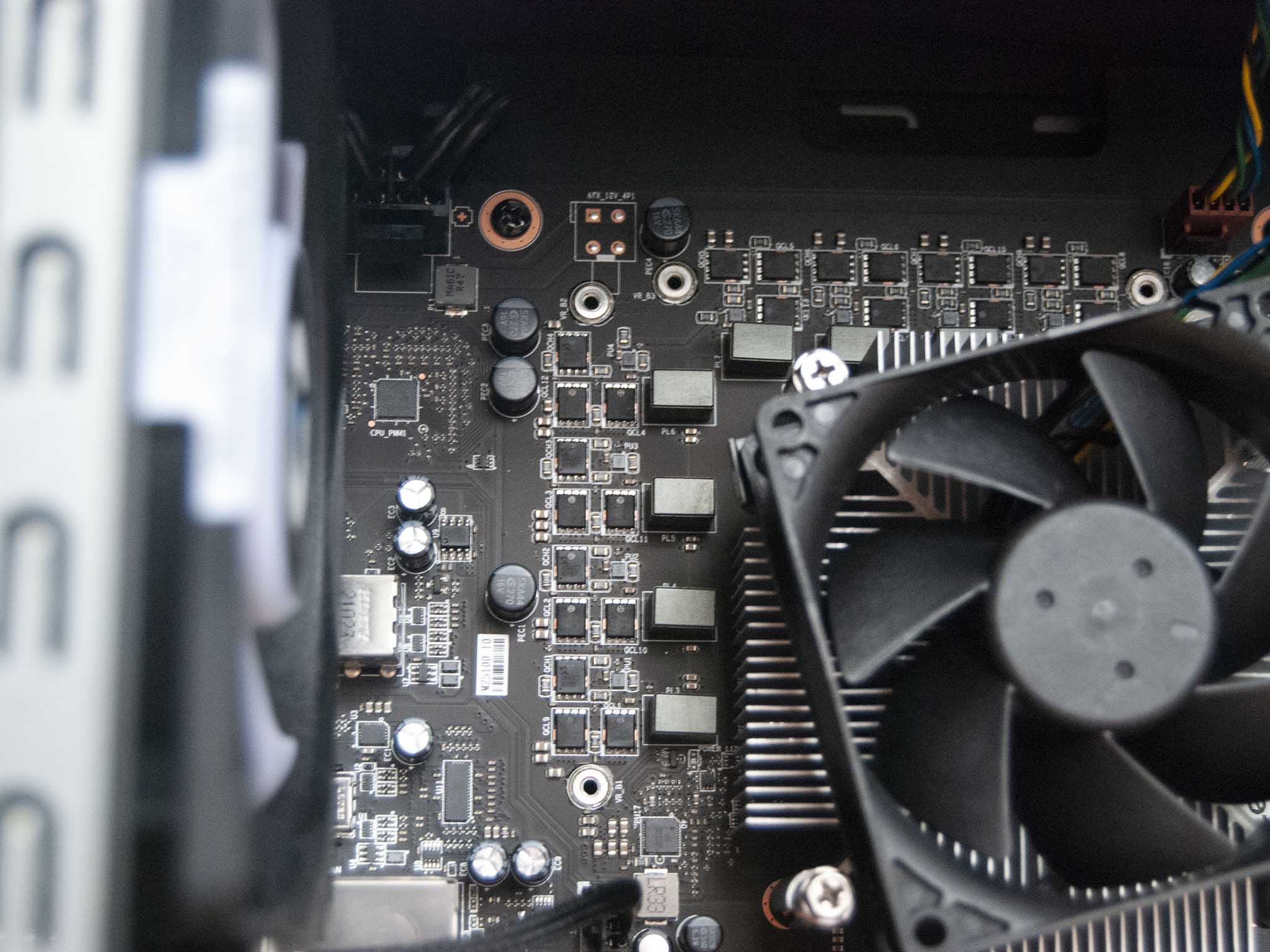
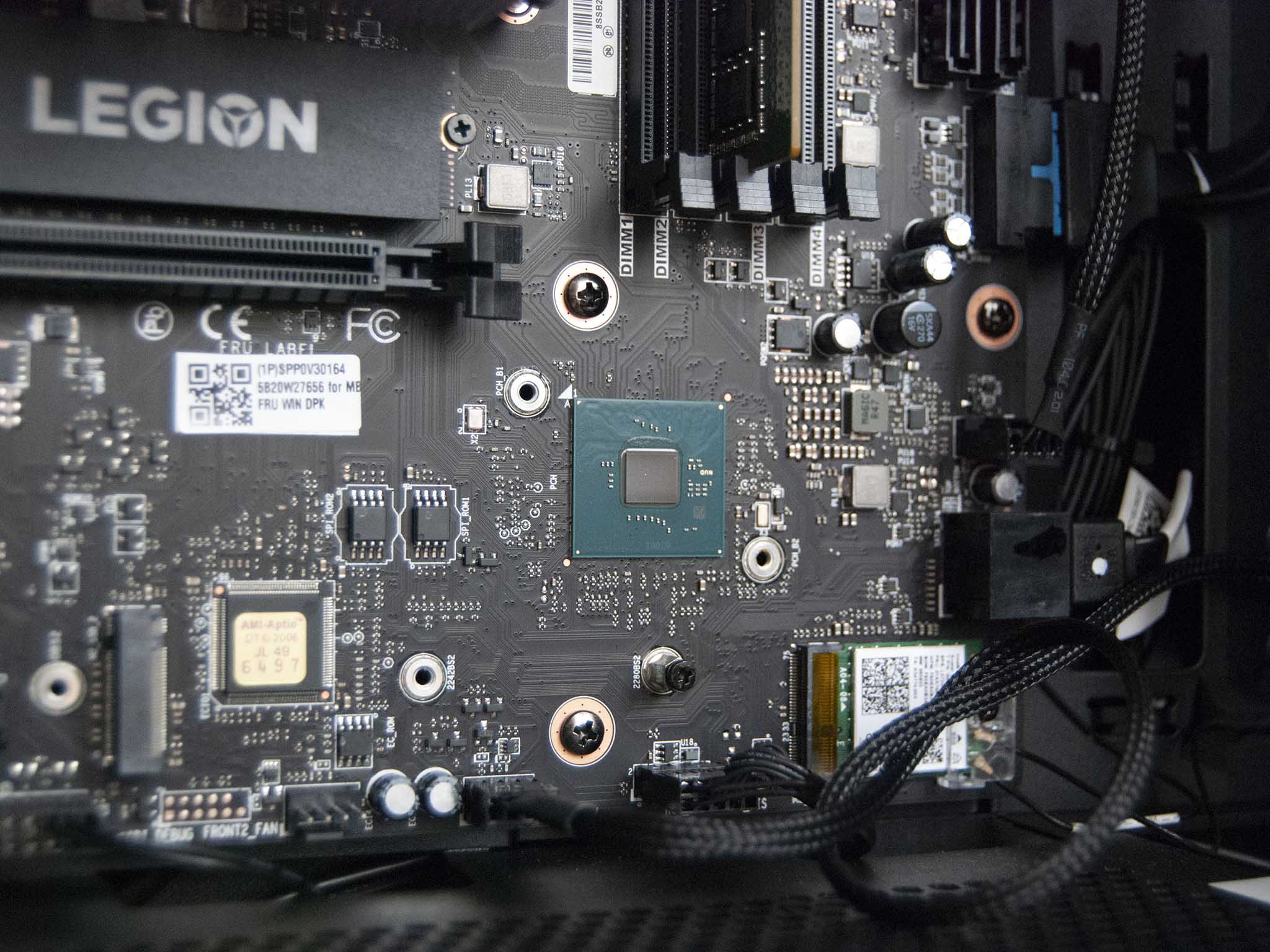
Lenovo includes just one 8GB stick of RAM with this model, meaning you're getting inferior single-channel performance. The motherboard doesn't support XMP, so the advertised 3200MHz RAM is actually going to run at 2933MHz with CL22 timing. The RAM really isn't great, and it's one of the first things I would upgrade if I purchased this PC.
Most boutique pre-builts (and Newegg's ABS brand) come with more popular versions of GPUs, while the likes of Dell, HP, and Lenovo usually use some sort of OEM stock. In this particular case it's made by MSI. It's up to the usual GTX 1660 SUPER specs and will perform as such, but it's nothing special.
Altogether, the Legion Tower 5i's design and features are a mix of disappointment and surprise. Corners were definitely cut on the CPU cooling, RAM, and motherboard heatsinks, but the case has excellent (if a bit dusty) airflow, decent cable management, and a lack of proprietary hardware that inhibits future upgrades. Casual PC gamers — which this PC is aimed at — are likely going to care more about whether or not they can play their favorite games. And as we'll see in the next section, it's up to the task.
Lenovo Legion Tower 5i: Performance and gaming
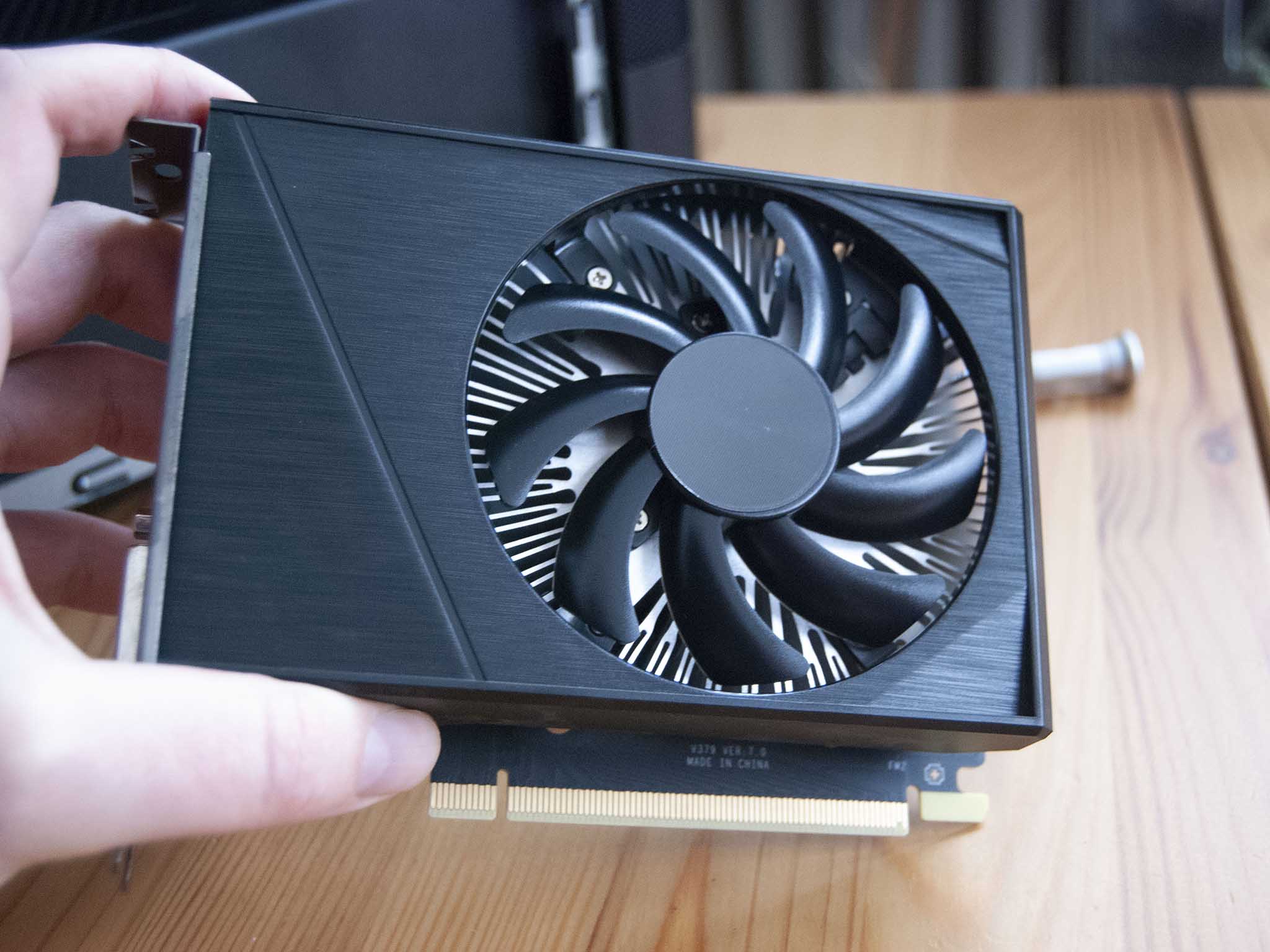
Before I took the system apart to check its build quality, I ran a series of benchmarks and stress tests. I wanted to see how well the system keeps its cool under load, especially with the upgraded ventilation and fairly substantial case cooling.
I began with a full-system stress test that ran for just more than 30 minutes. I used Lenovo's "Performance" thermal mode for the majority of these tests. At the end of the test, CPU cores hovered around the 80 C to 85 C mark, pulling about 65W power. The CPU's clock remained stable at 3.2GHz. The GPU was at 64 C at the end of the test, pulling in about 88W and running at a 1.89GHz clock. Those CPU temperatures are certainly at the higher end of what you want to see, but it's expected with the awful cooler that's used.
The CPU fan maxed out at about 1550 RPM with occasional bursts but generally sat at the 1150 RPM mark. Case fans never went above 1250 RPM and mostly sat below 1000 RPM. I must stress how quiet this system is, even when it's maxed out. You can hardly hear it running when idling, and it never topped 40 decibels during the stress test. And there's evidently plenty of airflow, with temperatures at the motherboard remaining steady at 21 C. Considering how closed up previous models used to be, this is a big improvement.
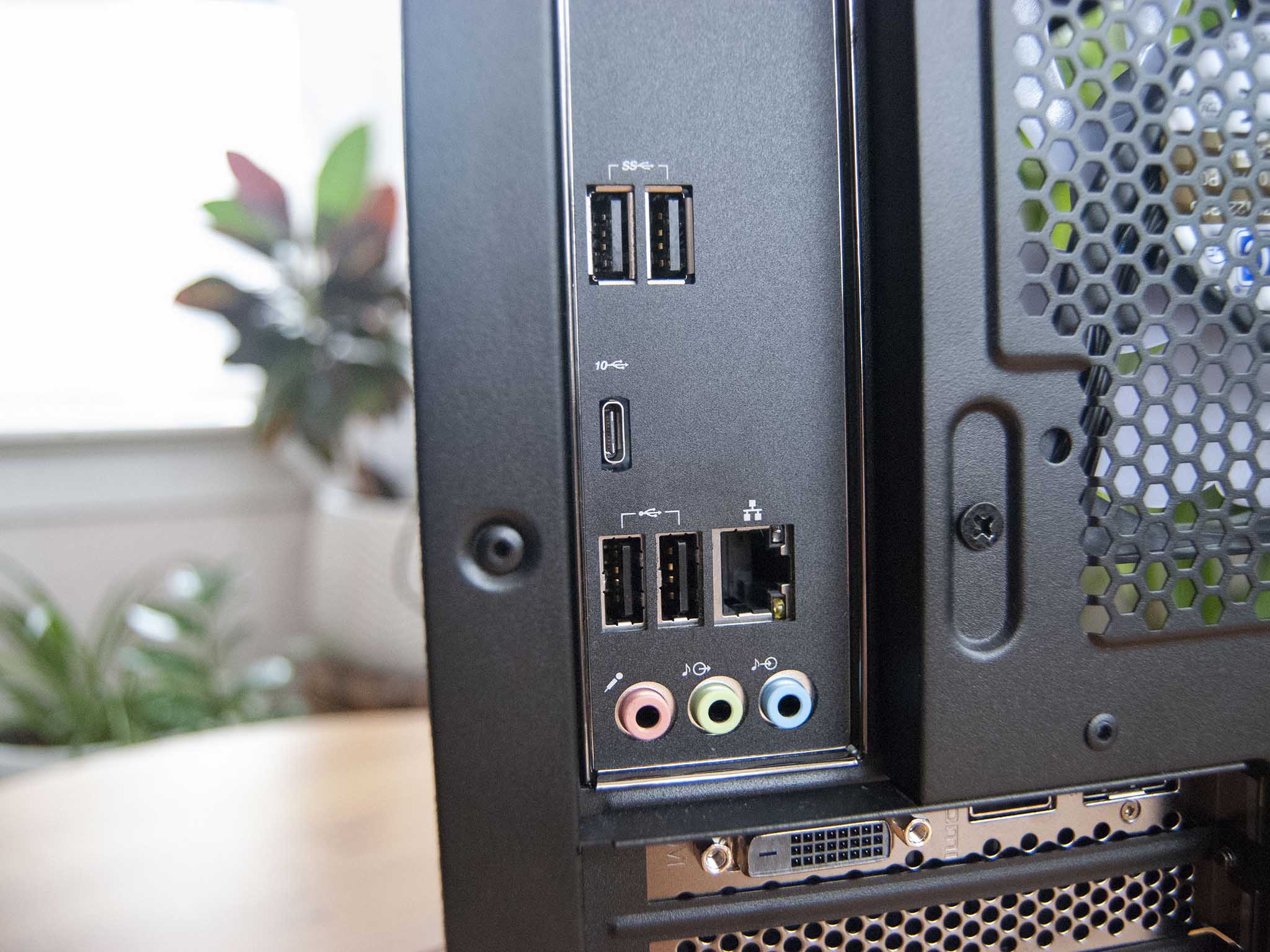
I switched Lenovo's power plan to "Balanced" to see how it affected performance. Running the same stress test — without letting the system cool down — kicked the CPU fan up to about 1600 RPM and brought CPU temperatures down to between 70 C and 75 C. Noise went up only about three decibels. The CPU clock dropped to 3.09GHz while the GPU remained at 1.89GHz. It seems as though Balanced mode simply runs fans faster to lower temps without really affecting performance. This was evident in benchmarks as well, with results coming in essentially the same when running on Lenovo's Performance and Balanced modes.
There was absolutely no thermal throttling during any of these stress tests, and the PC quiets back down to imperceptible noise levels as soon as it's allowed to idle. It's clear that the added ventilation on the case is doing its job. This PC ran much quieter and cooler than I was expecting. Before getting into real-world gaming performance, take a look at how the Legion Tower 5i fared in a bunch of benchmark tests.
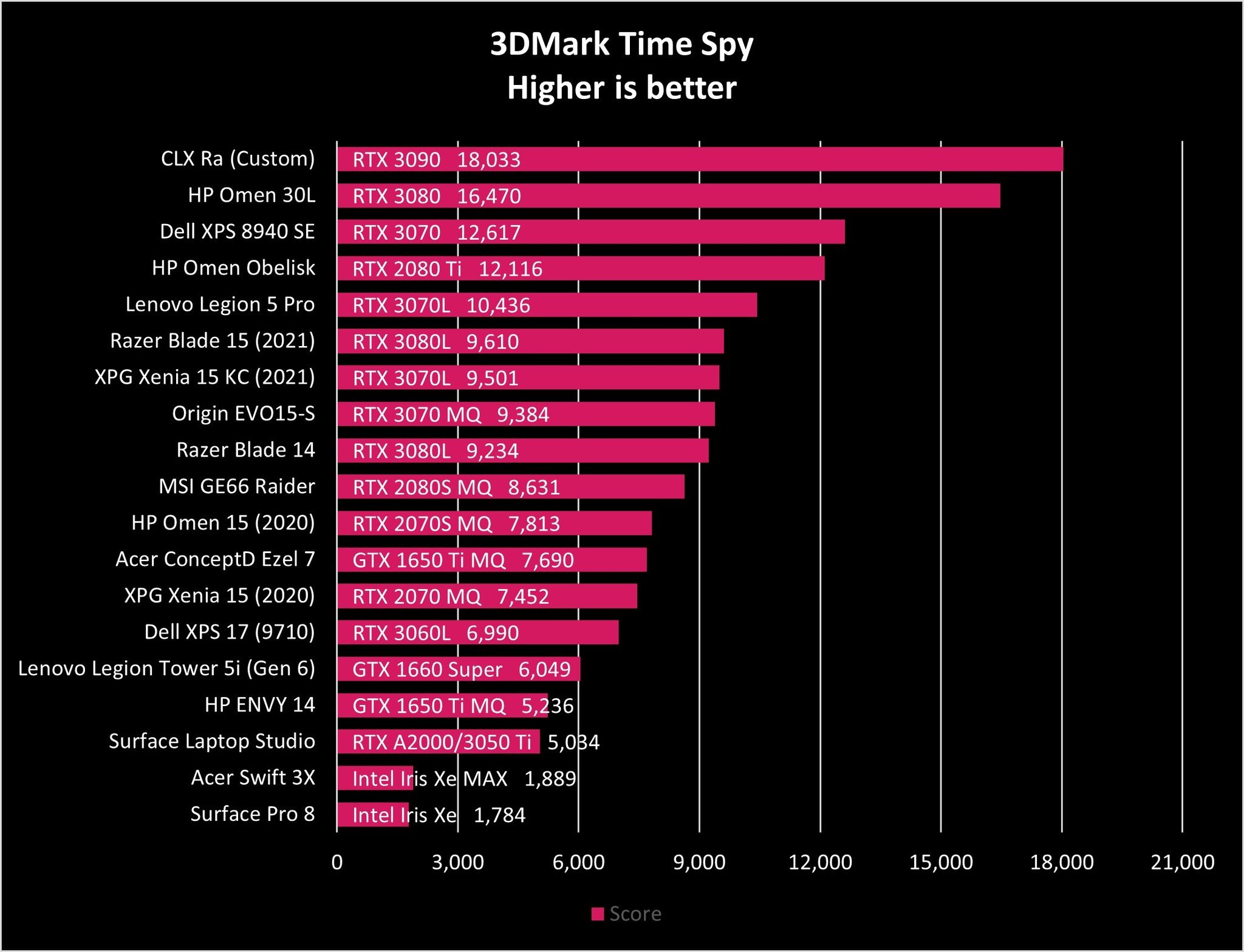
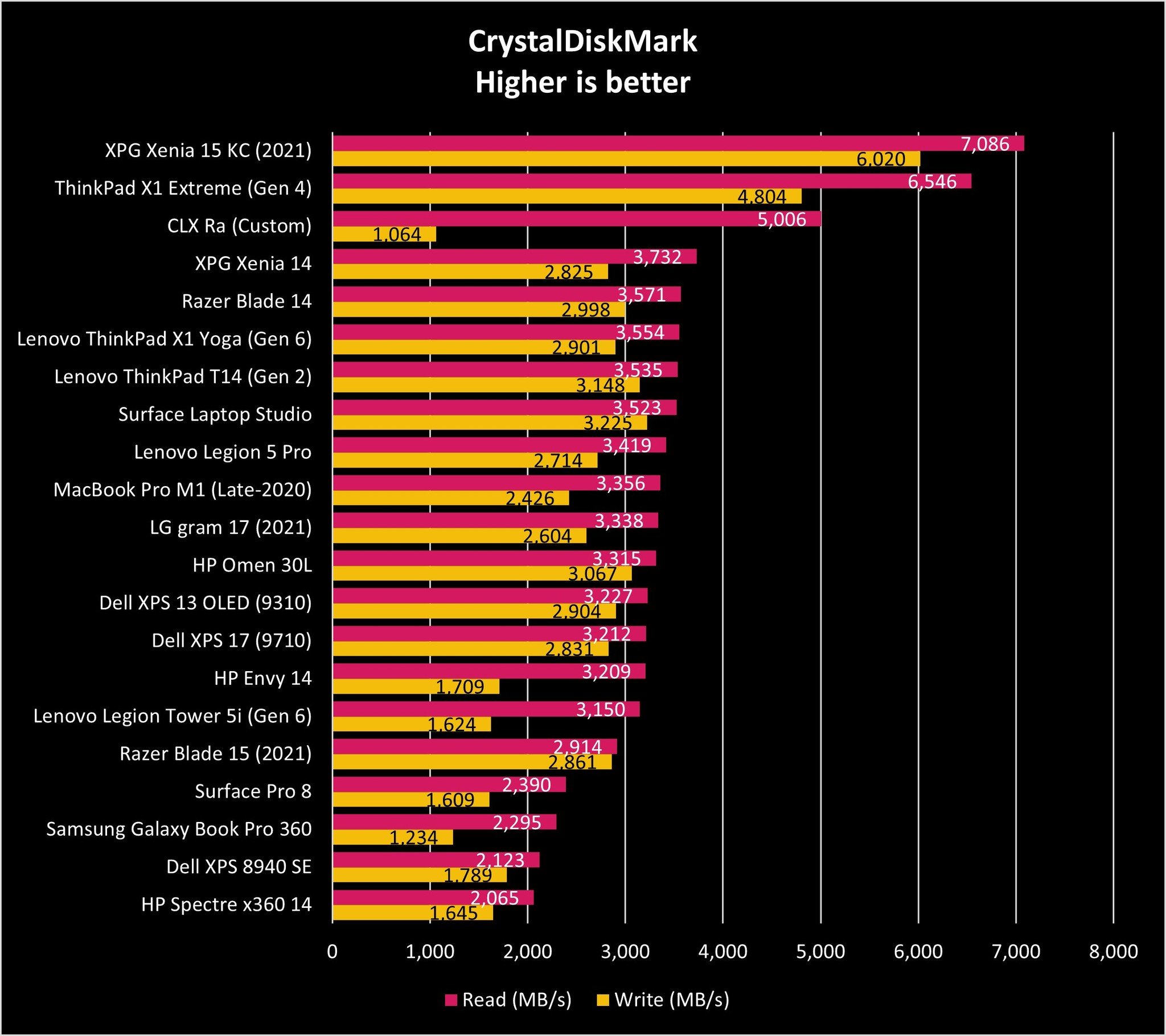
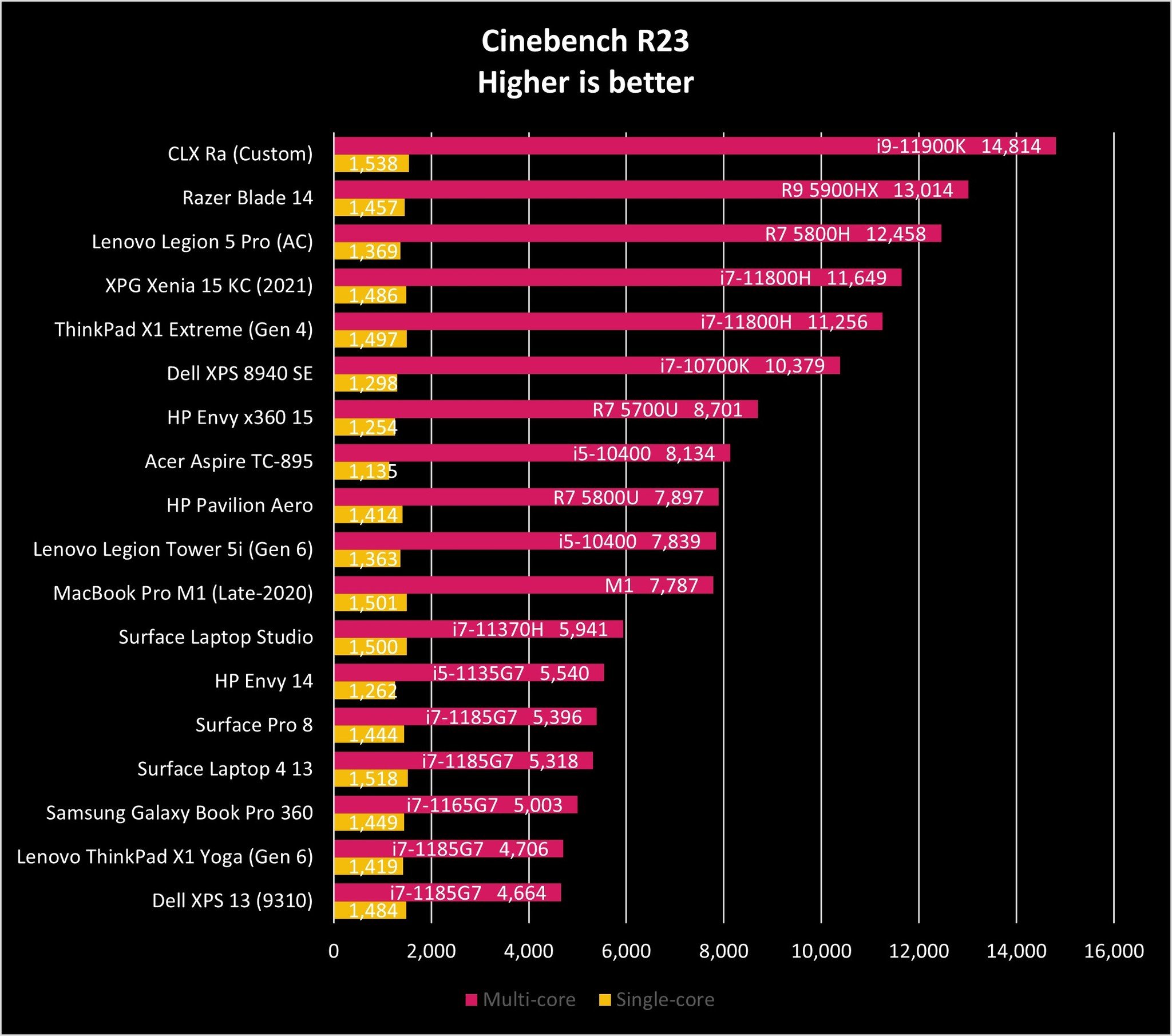
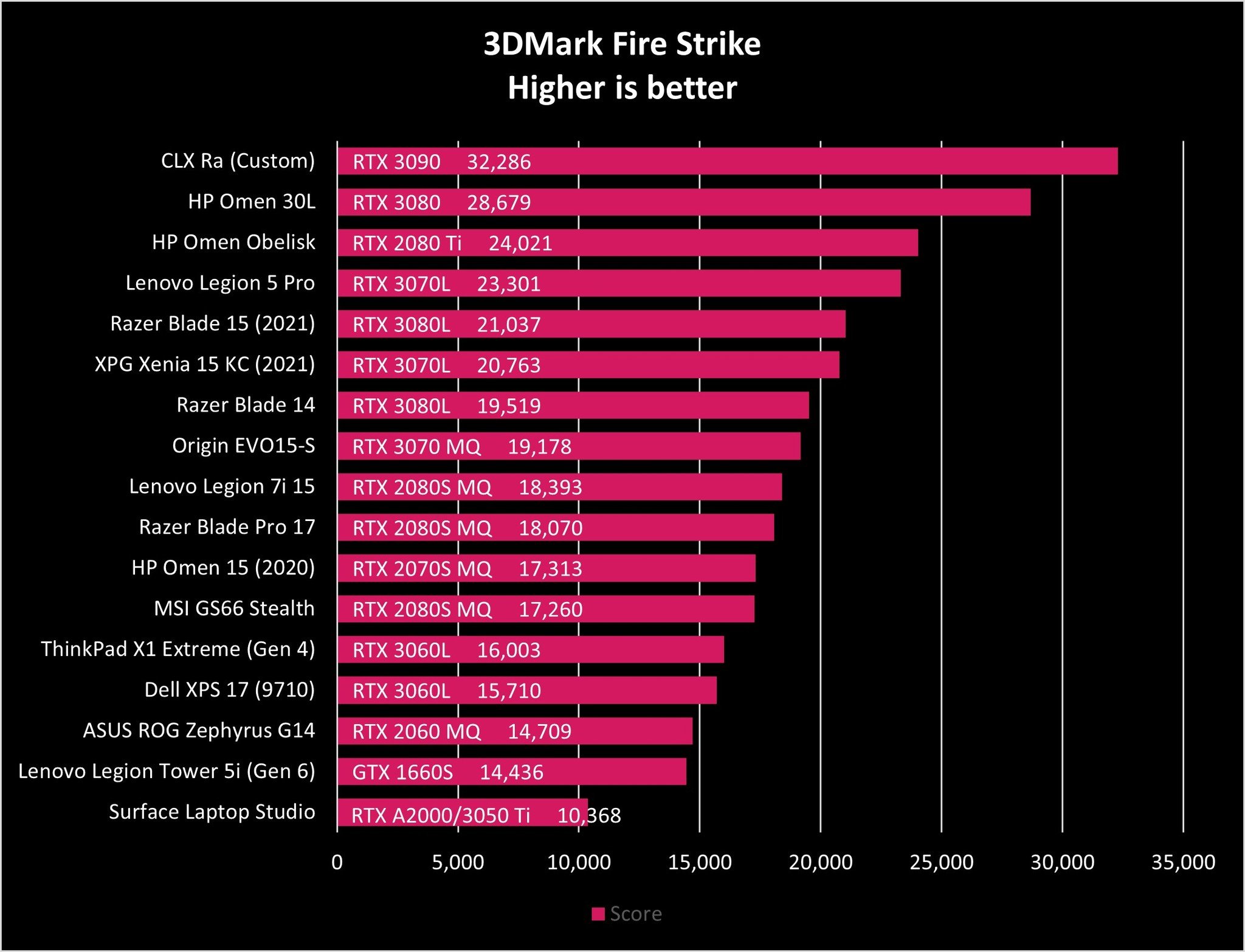
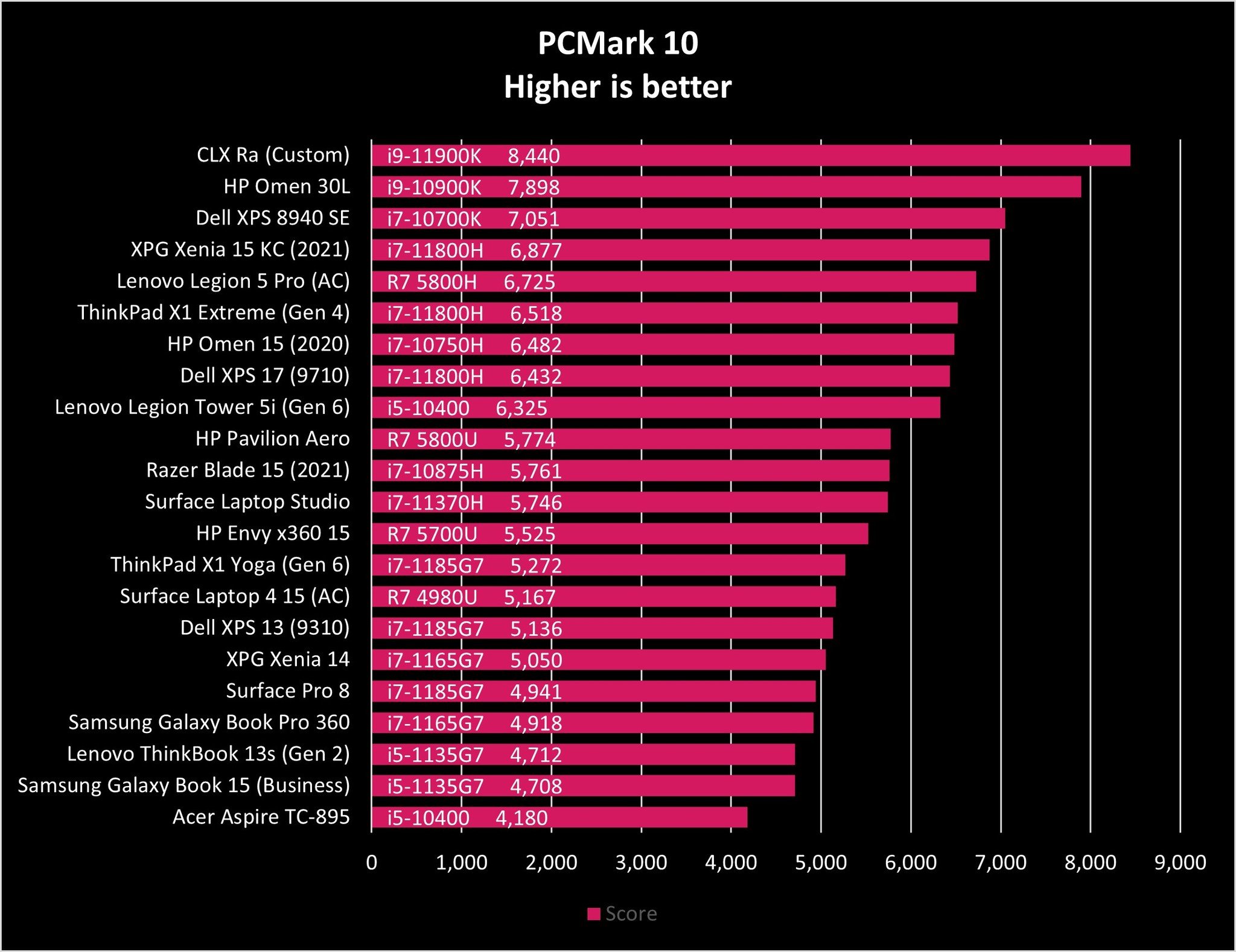
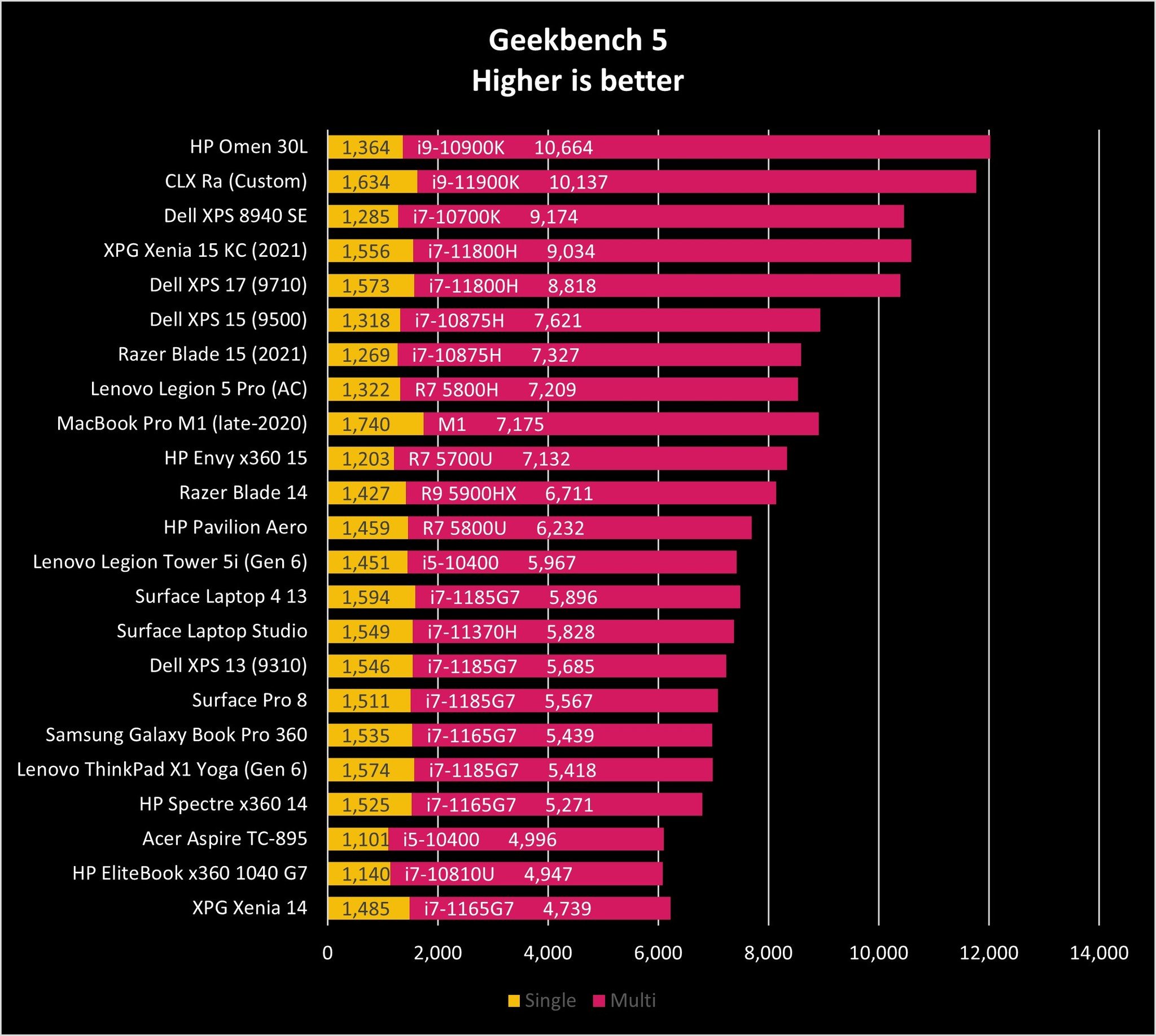
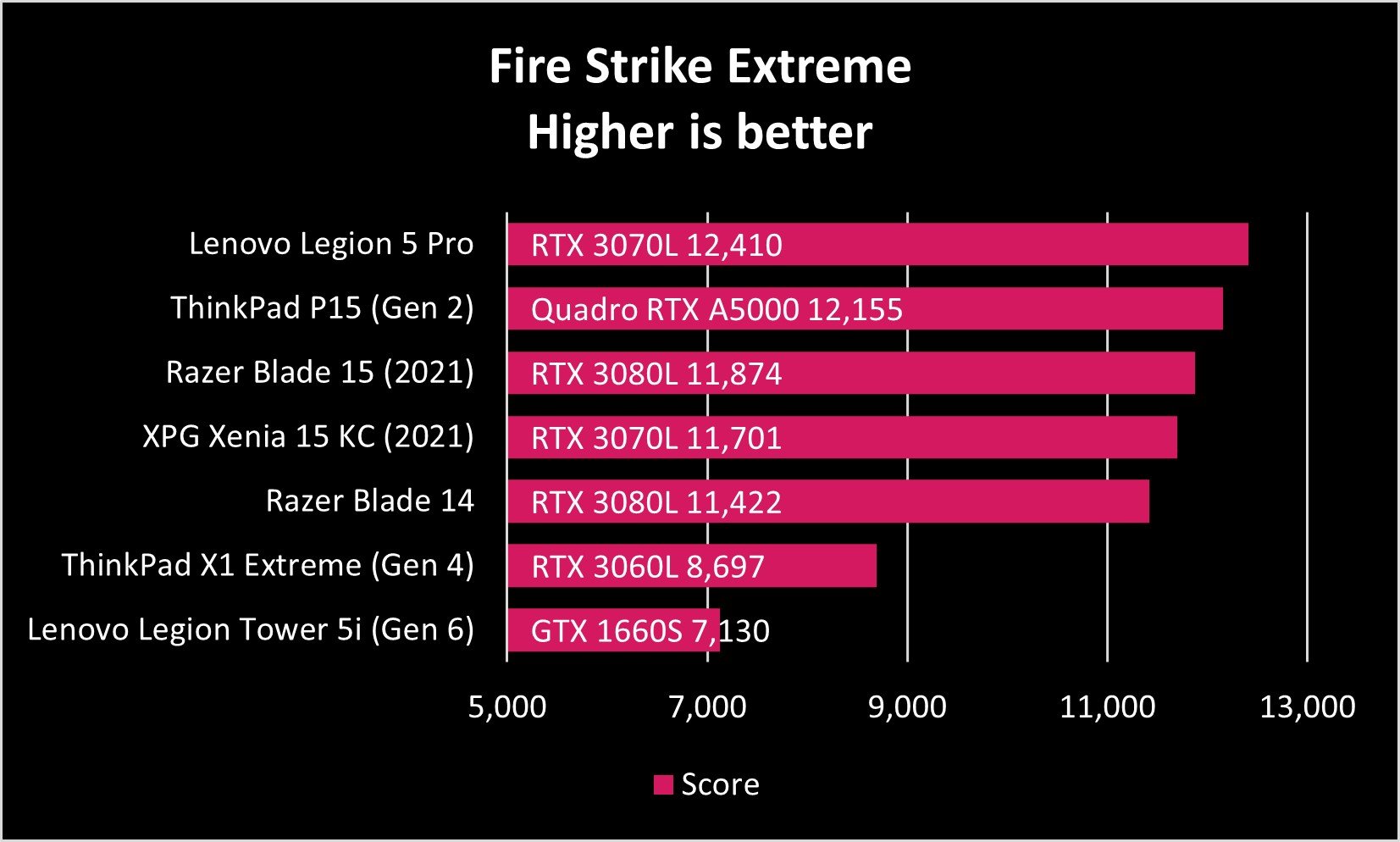
The M.2 PCIe 3.0 NVMe SSD provided by Lenovo isn't particularly fast on the write side of things, but at least the read performance is strong. There is room for a second M.2 SSD if you'd like to add more modern storage, and the system should support PCIe 4.0 if you'd like to go that route. The 1TB SATA HDD that Lenovo tosses in for bulk storage is at least 7200 RPM, but it is extremely slow. If you don't spec a larger M.2 SSD from the factory, I'd recommend investing in one of the best SSDs as soon as your budget allows. Having only a couple hundred gigabytes of fast storage will likely feel cramped after a short time.
After running the synthetic benchmarks, I sat down and tested a few demanding games at both 1440p and 1080p. Starting with Red Dead Redemption 2 at 1440p with Balanced in-game preset, the Legion Tower 5i averaged 48.8 frames per second (FPS). Dropping down to 1080p with the same Balanced preset, the system averaged 64.3 FPS. This is one of the most demanding PC games out there, so this is an excellent result.
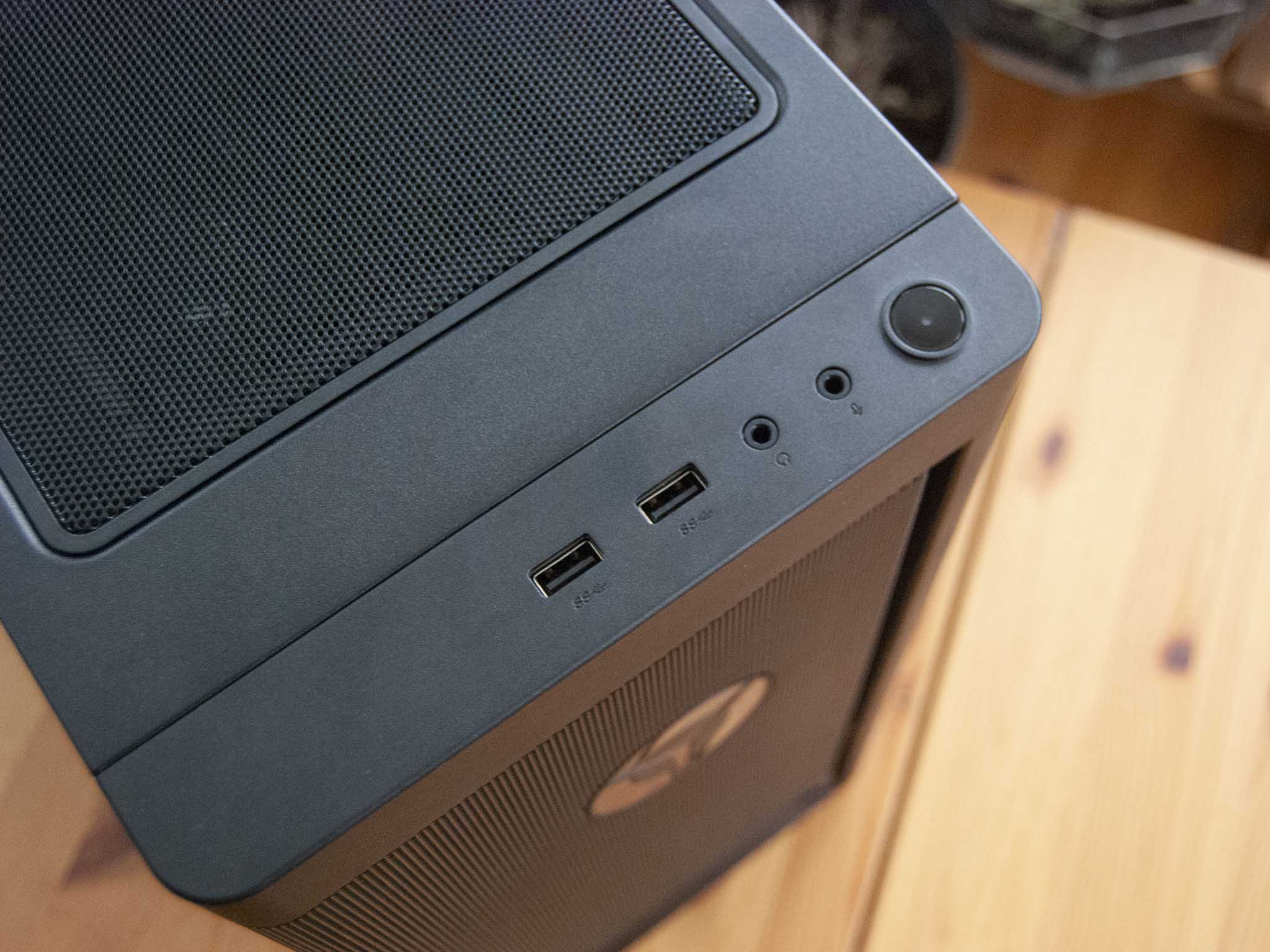
Far Cry 5 at 1440p with a High in-game preset averaged 67 FPS. Dropping down to 1080p, it averaged 93 FPS. And finally, Shadow of the Tomb Raider averaged 63 FPS at 1440p and 91 FPS at 1080p, both with a High in-game preset. For the mid-range performance hardware inside, all of these results are perfectly acceptable. I wouldn't recommend making the step up to 1440p full time with the GTX 1660 SUPER; it will fare much better at 1080p.
Having to wade through bloatware and spend your time uninstalling useless apps is never fun, especially on a brand-new PC. Lenovo's Legion Tower 5i comes with McAfee Antivirus installed, as well as some other popups that occur when you first open the Vantage management app. The situation isn't nearly as bad as with some other manufacturers, but you will have to spend a bit of time removing the unnecessary junk from the PC.
Lenovo Legion Tower 5i: Competition
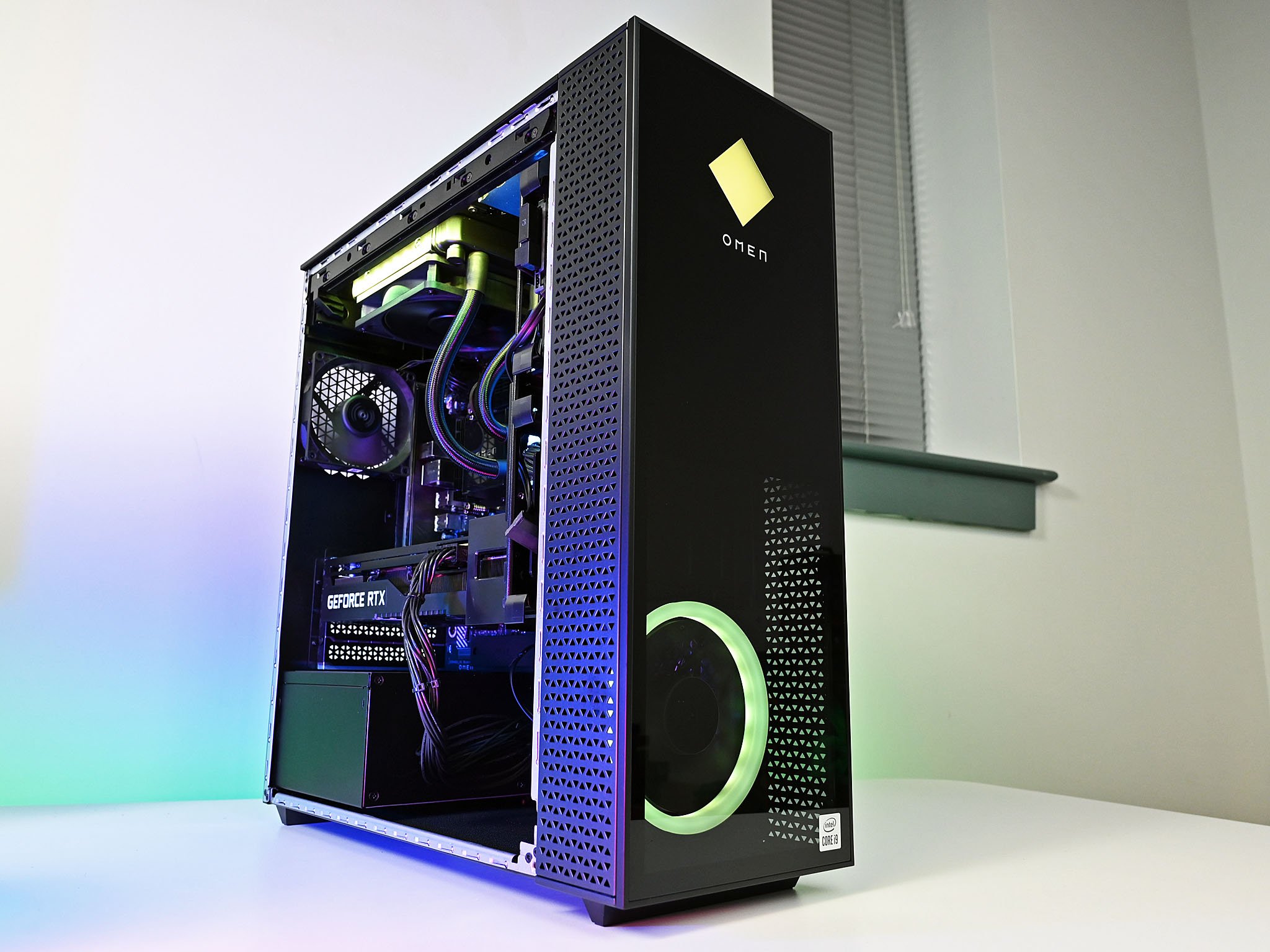
Newegg's ABS brand of gaming PCs is known for using real parts from real manufacturers in its configurations, meaning there's a lot less of a chance that you're going to get stuck with some shoddy proprietary hardware. For something in the same price range, the ABS Master ALI587 should be considered. It has a GIGABYTE B560 motherboard, Intel Core i5-11400F CPU, 16GB of dual-channel DDR4 RAM, 512GB M.2 PCIe NVMe SSD, EVGA RTX 2060 GPU, DeepCool Gammaxx PSU, DeepCool finstack CPU cooler, and DeepCool Macube case. It costs about $1,000 and is superior in almost every way save possibly airflow and customer support.
If you have a bit more money to spend and are leaning toward an AMD system, the ABS Master ALA270 is another great choice. It uses an ASUS Prime B550 motherboard, Ryzen 5 5600X CPU, NVIDIA RTX 3060 GPU, 16GB of dual-channel DDR4 RAM, 512GB M.2 PCIe NVMe SSD, all built into an ASUS TUF Gaming GT301 case. It costs about $1,400.
Our top pick for best gaming desktop PCs is the HP OMEN 30L. AMD Ryzen models start at about $920, while Intel models start at about $1,400. There are a ton of configuration options you can sort through, and for the most part — like the Legion Tower 5i — the parts remain non-proprietary so that you can upgrade in the future.
Lenovo Legion Tower 5i: Should you buy it?
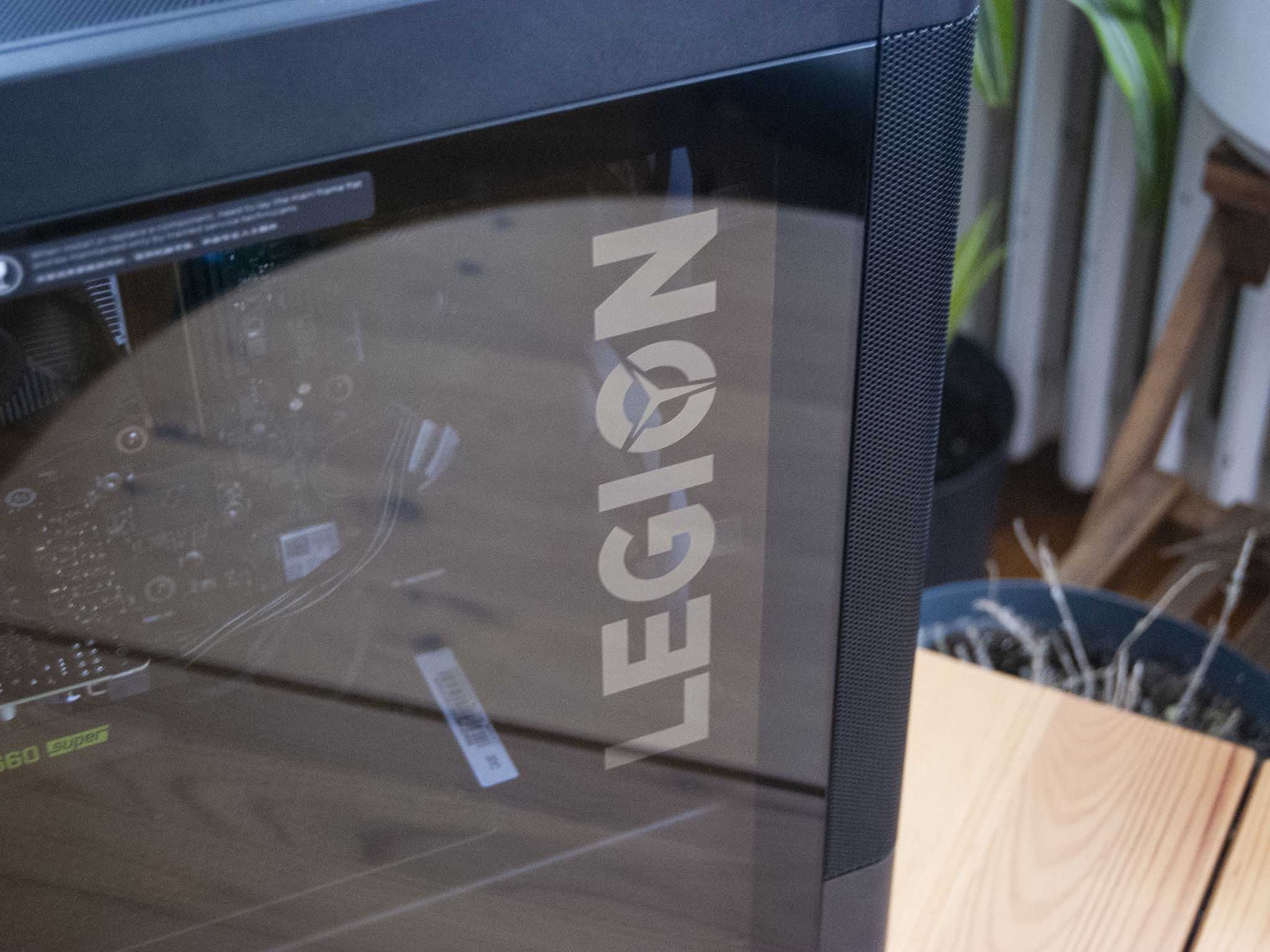
You should buy this if ...
- You're a casual PC gamer who doesn't pay as close of attention to the finer build details
- You want smooth frame rates at 1080p
- You want the option to upgrade your PC in the future
You shouldn't buy this if...
- You're a PC enthusiast with a keen eye for detail
- You're interested in pushing 1440p at high frame rates
- You'd rather not deal with an abundance of OEM hardware
Lenovo's sixth-gen Legion Tower 5i has some smart new design choices, including more ventilation for better airflow and for better cooling support. It's altogether an attractive case, and its size isn't overbearing. It should fit above or below a desk. Lenovo didn't go with any proprietary parts that I can see, meaning you won't struggle much if you want to upgrade in the future with parts you buy separately. However, it's also using a ton of OEM hardware. You're not really getting name-brand parts here, which will likely turn off most enthusiasts. If you're more on the casual side — someone who just wants a PC that can play games without much fuss — it should be a much better fit.
The system runs fairly cool. There's a lot of ventilation, and though the dust filters are a bit too macro to catch everything, the case has excellent airflow. When idling, it's hard to tell whether the PC is actually on because it's so quiet. You're going to see CPU temperatures near the top of what's considered within acceptable range due to the awful CPU cooler, but the system doesn't scream trying to keep it there.
If you're looking for a decently priced pre-built gaming PC that can handle a smooth 1080p gaming experience, the Legion Tower 5i (Gen 5) will get the job done. But there are plenty of alternatives out there if you can't find Legion stock or if you're looking for something with fewer cut corners.

Cale Hunt brings to Windows Central more than eight years of experience writing about laptops, PCs, accessories, games, and beyond. If it runs Windows or in some way complements the hardware, there’s a good chance he knows about it, has written about it, or is already busy testing it.
